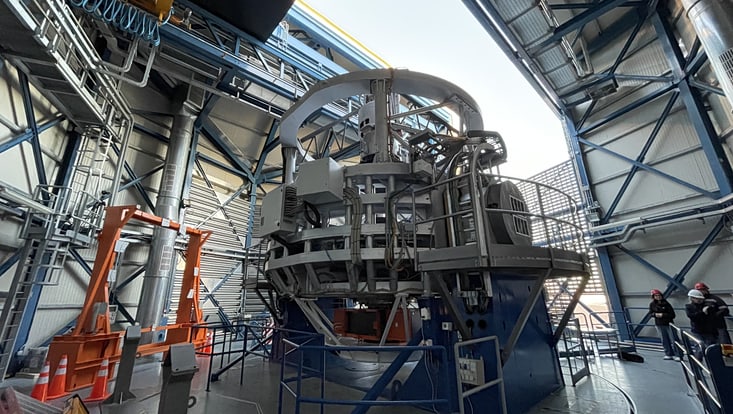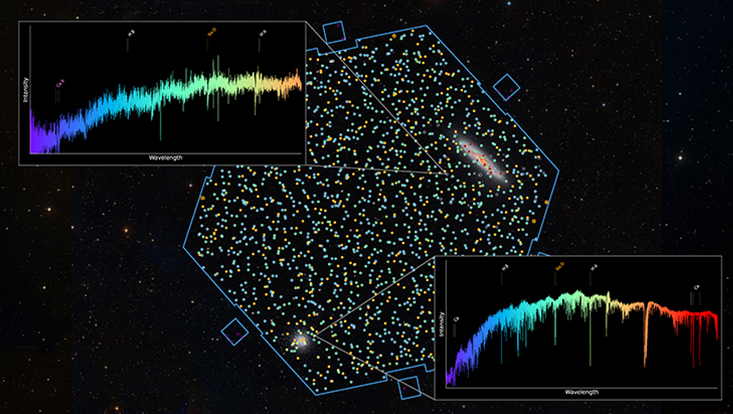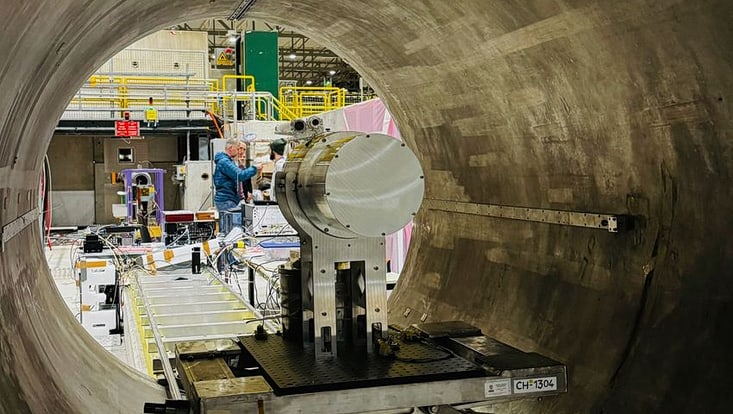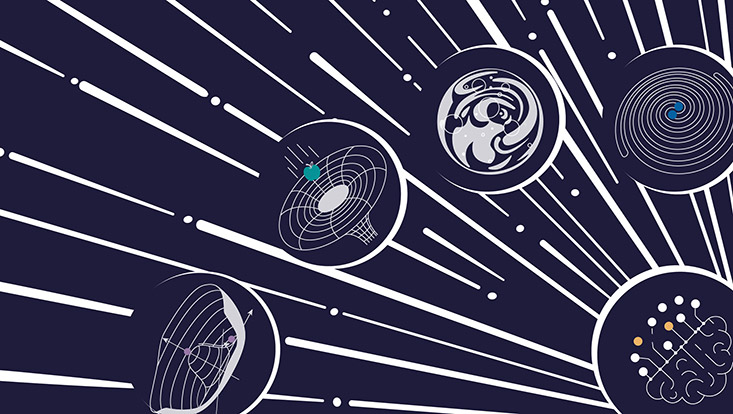First measurement with new astronomical instrumentThe sky in all colors
21 October 2025
A few days ago, the European Southern Observatory put a new type of instrument into operation: the 4-meter Multi-Object Spectroscopic Telescope (4MOST), which will conduct a unique survey of the southern sky over the next five years. The University of Hamburg participates in this milestone achievement by the international 4MOST consortium with its Cluster of Excellence “Quantum Universe”.
On October 18, 2025, 4MOST captured the light of the night sky for the first time. This moment is crucial in the life of any telescope, as it marks the beginning of its scientific work. 4MOST does not simply create images of the sky, but instead collects detailed information about the color components, known as spectral colors, of over 2,400 celestial objects simultaneously. Decomposing light into its individual color components, a process known as spectroscopy, provides astronomers with clues about the properties of celestial bodies, such as their temperature, chemical composition, and motion.
4MOST is located at the Paranal Observatory in Chile and is the largest instrument for spectroscopic sky surveys in the southern hemisphere. Its combination of a large field of view, the number of objects observed simultaneously, and the multitude of spectral colors recorded at the same time is unique worldwide. This powerful instrument is capable of breaking down the light from 2,400 celestial objects simultaneously into 18,000 color components. By analyzing the detailed spectral colors of thousands of objects every 10 to 20 minutes, 4MOST creates a comprehensive catalog of physical parameters for approximately 30 million objects spread across the entire southern sky.
In this way, 4MOST contributes to a better understanding of the formation and evolution of stars and planets, the Milky Way and other galaxies, and to gaining new insights into black holes and other exotic objects, as well as the universe as a whole. “With the help of 4MOST, we also obtain information about the distribution of dark matter in the universe,” explains Jochen Liske, Professor of Observational Astronomy at Hamburg Observatory and principal investigator at the Cluster of Excellence “Quantum Universe” at the University of Hamburg. “This is of interest to us because the statistical distribution of dark matter in the universe allows us to draw conclusions about the physical properties of dark matter particles.”
Liske and his team have helped develop the instrument over the past 10 years. The University of Hamburg contributed a total of two million euros to the construction of 4MOST, most of which was used to construct one of the instrument's three spectrographs. “After the long development period, we are overjoyed that the observations can finally begin,” says Liske happily.
The Quantum Universe Cluster of Excellence at the University of Hamburg studies the origin and evolution of the universe from its beginning to the present day. Astronomical observations have long shown that the gravitational pull of visible matter in the universe, such as stars and gas, is not sufficient to explain its movement in galaxies. Researchers therefore assume that every galaxy is permeated and surrounded by dark matter. “Quantum Universe” is significantly involved in the development and implementation of experiments designed to detect dark matter and thus solve one of the greatest mysteries of the universe.
4MOST was designed and built by an international consortium of 30 universities and research institutes in Europe and Australia under the leadership of the Leibniz Institute for Astrophysics Potsdam (AIP) and is operated scientifically by the AIP. The main institutes involved in the construction and operation of the facility are: Leibniz Institute for Astrophysics Potsdam (AIP), Macquarie University/Australian Astronomical Optics (AAO), Centre de Recherche Astrophysique de Lyon (CRAL), European Southern Observatory (ESO), Max Planck Institute for Astronomy (MPIA), Max Planck Institute for Extraterrestrial Physics (MPE), Netherlands Research School for (NOVA), University of Cambridge/Institute of Astronomy (IoA), University of Hamburg (UHH)/Hamburg Observatory, University of Heidelberg/Center for Astronomy (ZAH).
The development and operation of 4MOST were made possible by funding from the German Federal Ministry of Research, Technology and Space (BMFTR), the Large-Scale Instrument Program of the German Research Foundation (DFG) as well as the University of Hamburg.





